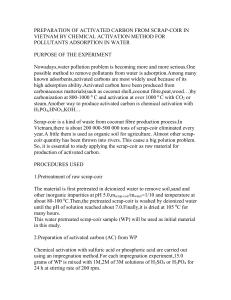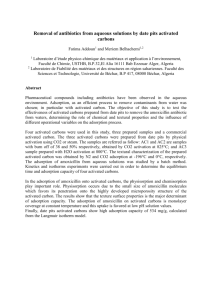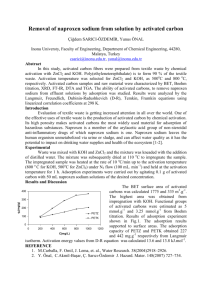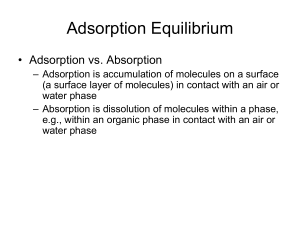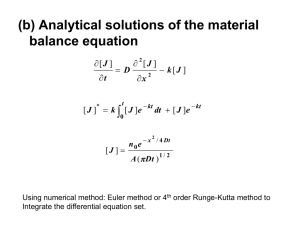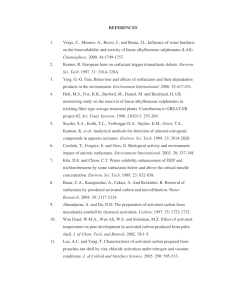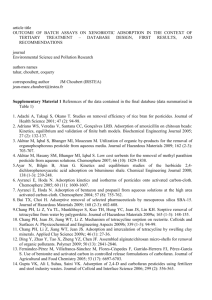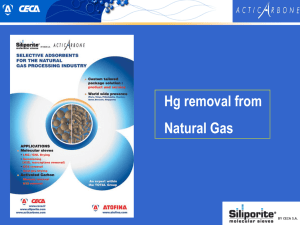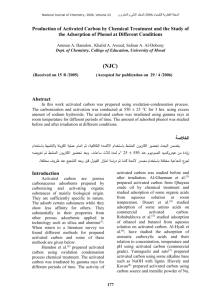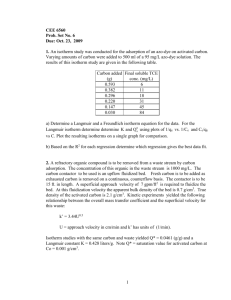AD-OX process for organic polluted water treatment and
advertisement
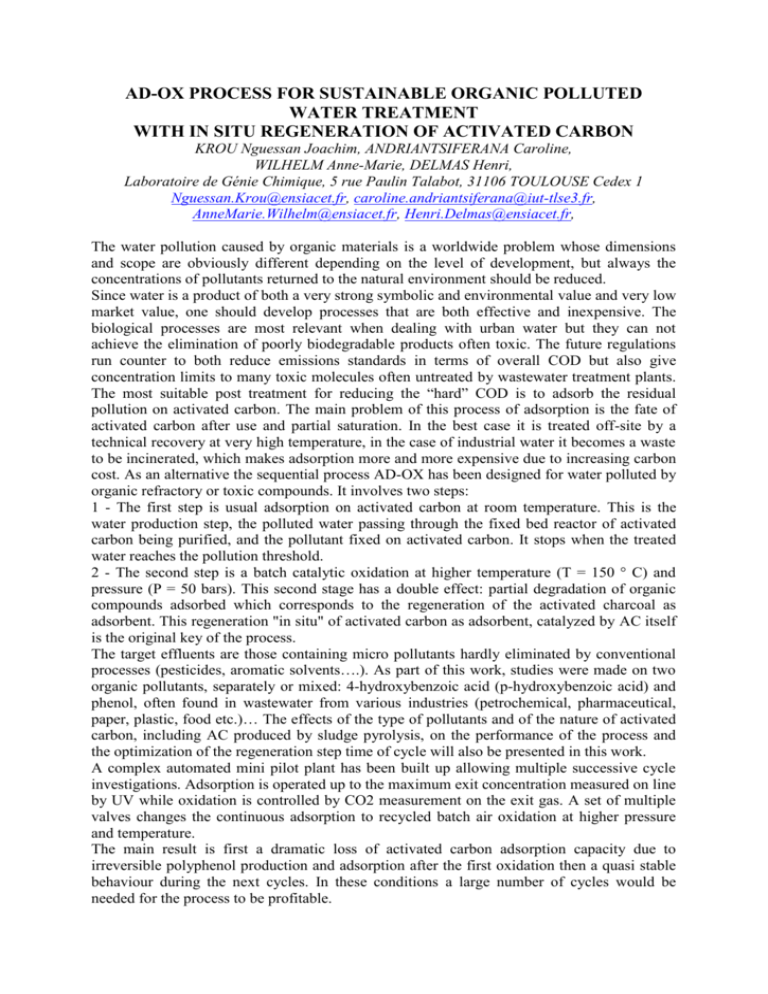
AD-OX PROCESS FOR SUSTAINABLE ORGANIC POLLUTED WATER TREATMENT WITH IN SITU REGENERATION OF ACTIVATED CARBON KROU Nguessan Joachim, ANDRIANTSIFERANA Caroline, WILHELM Anne-Marie, DELMAS Henri, Laboratoire de Génie Chimique, 5 rue Paulin Talabot, 31106 TOULOUSE Cedex 1 Nguessan.Krou@ensiacet.fr, caroline.andriantsiferana@iut-tlse3.fr, AnneMarie.Wilhelm@ensiacet.fr, Henri.Delmas@ensiacet.fr, The water pollution caused by organic materials is a worldwide problem whose dimensions and scope are obviously different depending on the level of development, but always the concentrations of pollutants returned to the natural environment should be reduced. Since water is a product of both a very strong symbolic and environmental value and very low market value, one should develop processes that are both effective and inexpensive. The biological processes are most relevant when dealing with urban water but they can not achieve the elimination of poorly biodegradable products often toxic. The future regulations run counter to both reduce emissions standards in terms of overall COD but also give concentration limits to many toxic molecules often untreated by wastewater treatment plants. The most suitable post treatment for reducing the “hard” COD is to adsorb the residual pollution on activated carbon. The main problem of this process of adsorption is the fate of activated carbon after use and partial saturation. In the best case it is treated off-site by a technical recovery at very high temperature, in the case of industrial water it becomes a waste to be incinerated, which makes adsorption more and more expensive due to increasing carbon cost. As an alternative the sequential process AD-OX has been designed for water polluted by organic refractory or toxic compounds. It involves two steps: 1 - The first step is usual adsorption on activated carbon at room temperature. This is the water production step, the polluted water passing through the fixed bed reactor of activated carbon being purified, and the pollutant fixed on activated carbon. It stops when the treated water reaches the pollution threshold. 2 - The second step is a batch catalytic oxidation at higher temperature (T = 150 ° C) and pressure (P = 50 bars). This second stage has a double effect: partial degradation of organic compounds adsorbed which corresponds to the regeneration of the activated charcoal as adsorbent. This regeneration "in situ" of activated carbon as adsorbent, catalyzed by AC itself is the original key of the process. The target effluents are those containing micro pollutants hardly eliminated by conventional processes (pesticides, aromatic solvents….). As part of this work, studies were made on two organic pollutants, separately or mixed: 4-hydroxybenzoic acid (p-hydroxybenzoic acid) and phenol, often found in wastewater from various industries (petrochemical, pharmaceutical, paper, plastic, food etc.)… The effects of the type of pollutants and of the nature of activated carbon, including AC produced by sludge pyrolysis, on the performance of the process and the optimization of the regeneration step time of cycle will also be presented in this work. A complex automated mini pilot plant has been built up allowing multiple successive cycle investigations. Adsorption is operated up to the maximum exit concentration measured on line by UV while oxidation is controlled by CO2 measurement on the exit gas. A set of multiple valves changes the continuous adsorption to recycled batch air oxidation at higher pressure and temperature. The main result is first a dramatic loss of activated carbon adsorption capacity due to irreversible polyphenol production and adsorption after the first oxidation then a quasi stable behaviour during the next cycles. In these conditions a large number of cycles would be needed for the process to be profitable.
